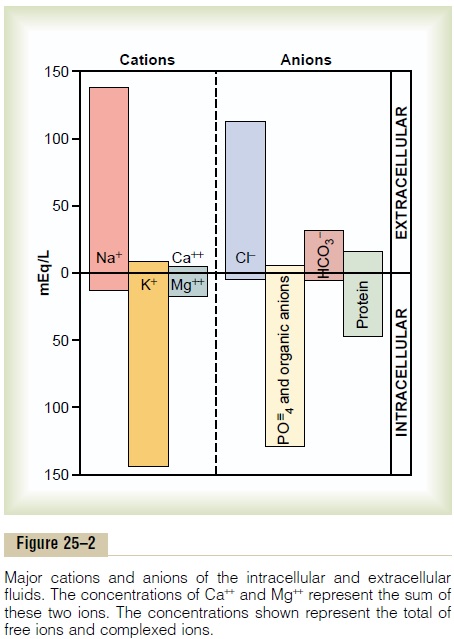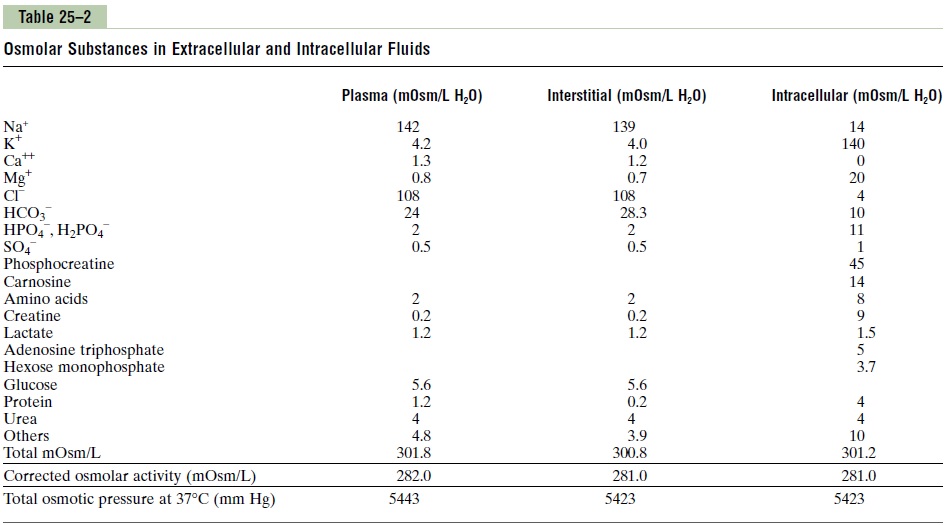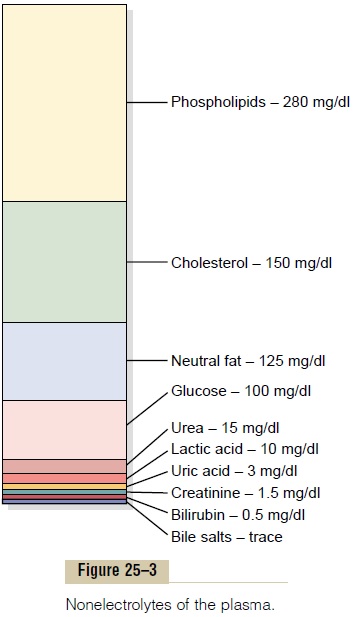Chapter: Medical Physiology: The Body Fluid Compartments: Extracellular and Intracellular Fluids; Interstitial Fluid and Edema
Constituents of Extracellular and Intracellular Fluids
Constituents of Extracellular and Intracellular Fluids
Comparisons of the composition of the extracellular fluid, including the plasma and interstitial fluid, and the intracellular fluid are shown in Figures 25–2 and 25–3 and in Table 25–2.

Ionic Composition of Plasma and Interstitial Fluid Is Similar
Because the plasma and interstitial fluid are separated only by highly permeable capillary membranes, their ionic composition is similar. The most important dif-ference between these two compartments is the higher concentration of protein in the plasma; because the capillaries have a low permeability to the plasma pro-teins, only small amounts of proteins are leaked into the interstitial spaces in most tissues.

Because of the Donnan effect, the concentration of positively charged ions (cations) is slightly greater (about 2 per cent) in the plasma than in the intersti-tial fluid. The plasma proteins have a net negative charge and, therefore, tend to bind cations, such as sodium and potassium ions, thus holding extra amounts of these cations in the plasma along with the plasma proteins. Conversely, negatively charged ions (anions) tend to have a slightly higher concentration in the interstitial fluid compared with the plasma, because the negative charges of the plasma proteins repel the negatively charged anions. For practical purposes, however, the concentration of ions in the
Referring again to Figure 25–2, one can see that the extracellular fluid, including the plasma and the interstitial fluid, contains large amounts of sodium and chloride ions, reasonably large amounts of bicar-bonate ions, but only small quantities of potassium, calcium, magnesium, phosphate, and organic acid ions.
The composition of extracellular fluid is carefully regulated by various mechanisms, but especially by the kidneys, as discussed later. This allows the cells to remain continually bathed in a fluid that contains the proper concentration of electrolytes and nutrients for optimal cell function.

Important Constituents of the Intracellular Fluid
The intracellular fluid is separated from the extracel-lular fluid by a cell membrane that is highly permeable to water but not to most of the electrolytes in the body.
In contrast to the extracellular fluid, the intracellu-lar fluid contains only small quantities of sodium and chloride ions and almost no calcium ions. Instead, it contains large amounts of potassium and phosphate ions plus moderate quantities of magnesium and sulfate ions, all of which have low concentrations in the extracellular fluid. Also, cells contain large amounts of protein, almost four times as much as in the plasma.
Related Topics